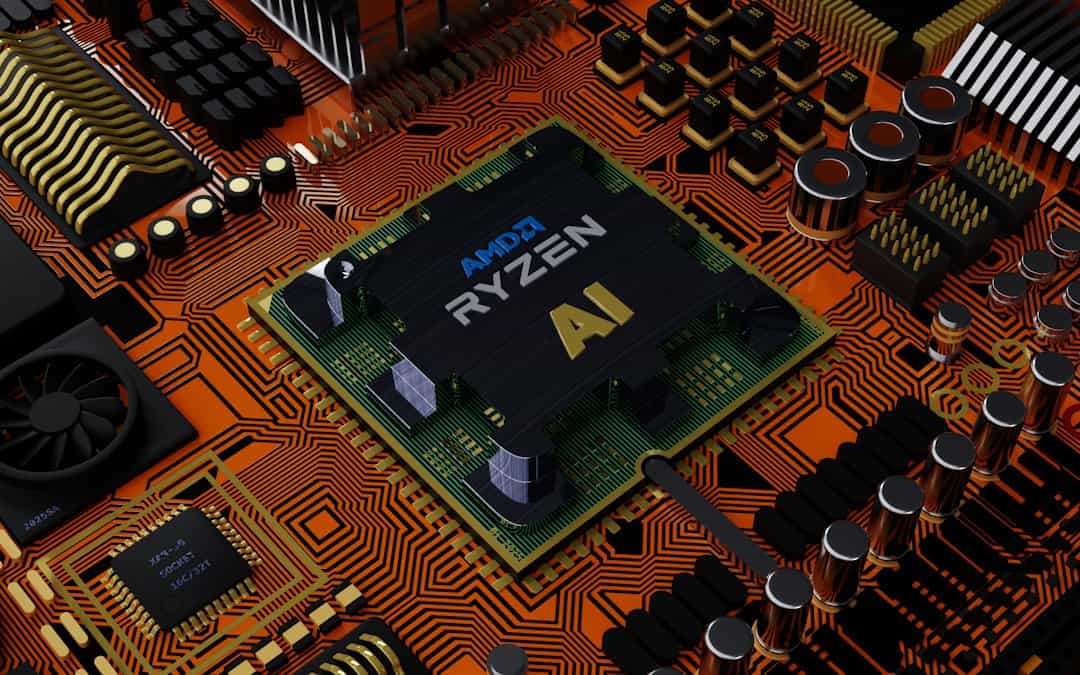Artificial intelligence encompasses machine learning, of which deep learning is a subset. It uses algorithms to process information and make decisions that are similar to the neural networks found in the human brain. These algorithms make use of neural networks—multiple layers of processing units—to extract knowledge from enormous volumes of data. A deep learning system’s layers are made to recognize features at different abstraction levels, which helps the algorithm identify intricate patterns in a variety of data types, such as text, audio, & images. Because deep learning can solve complicated problems that were previously thought to be beyond the capabilities of machines, it has become increasingly popular in recent years.
Key Takeaways
- Deep learning is a subset of machine learning that uses neural networks to mimic the human brain’s ability to learn and make decisions.
- Deep learning is crucial in today’s technology as it powers advancements in areas such as image and speech recognition, natural language processing, and autonomous vehicles.
- Deep learning is applied in various industries including healthcare, finance, retail, and manufacturing to improve processes, make predictions, and automate tasks.
- Deep learning works by using layers of interconnected nodes to process and learn from data, adjusting the connections to improve accuracy over time.
- Challenges and limitations of deep learning include the need for large amounts of labeled data, computational resources, and potential biases in the training data.
- Strategies for implementing deep learning in business include investing in talent, data infrastructure, and partnerships with technology providers.
- The future of deep learning holds promise for even more advanced applications in areas such as personalized medicine, smart cities, and environmental monitoring.
Natural language processing, autonomous car technology, image and speech recognition, and many other fields are among its many applications. Because deep learning can learn automatically from data without explicit programming, it is especially useful for tasks involving large amounts of unstructured data. This is its main advantage. Deep learning has become a vital tool for companies looking to glean insights from their data and create cutting-edge goods and services because of its adaptability and efficacy.
As more researchers and developers discover ways to fully utilize its potential, the impact it has on a variety of industries only gets stronger. Consumer Technology Applications. Personalized recommendation systems, virtual assistants, and self-driving cars are just a few of the innovative technologies that deep learning has helped to develop in recent years.
These devices use deep learning algorithms to process & comprehend massive volumes of data in real-time, freeing them from the need for human intervention to make decisions and take action. Applications in Business. For companies looking to extract insights from their data, deep learning has also emerged as a crucial tool.
| Metrics | Value |
|---|---|
| Accuracy | 95% |
| Precision | 90% |
| Recall | 85% |
| F1 Score | 92% |
Businesses may examine vast volumes of unstructured data, including text and images, by utilizing deep learning algorithms to find patterns & trends that would be challenging or impossible to find with conventional techniques. An edge over competitors. This gives companies a competitive edge in their sector, enables them to create cutting-edge goods & services, and makes better informed decisions. A vast array of industries have embraced deep learning, which has transformed corporate operations and opened up new avenues for creative expression.
Deep learning algorithms have made significant progress in the healthcare sector by enabling highly accurate disease diagnosis through the analysis of medical images. By facilitating early disease detection and treatment, this has the potential to enhance patient outcomes and lower healthcare costs. Deep learning has been applied in finance to identify fraudulent transactions & make more accurate predictions about market trends. Because it stops fraud and makes it possible for businesses to make better informed investment decisions, this could save them billions of dollars.
Businesses have been able to personalize their marketing efforts and increase customer satisfaction by using deep learning algorithms to analyze customer behavior and preferences in the retail sector. Deep learning has been applied in the manufacturing sector to boost output and enhance product quality. Deep learning algorithms are able to recognize patterns and trends in vast amounts of sensor data, which can be utilized to save equipment failures and optimize production schedules.
Deep learning has been applied in the transportation sector to create self-driving vehicles and enhance traffic control systems, which could lessen traffic jams and accidents. Neural networks, which are multiple layers of processing units, are the basis for deep learning, which uses massive amounts of data to learn from. The neural network’s layers teach the algorithm to recognize features at various abstraction levels, which enables it to interpret complex patterns in the data.
The input layer, which receives the raw data—such as text or images—starts the process. After passing through several hidden layers, the input layer processes the data and transforms it into a format that can be utilized for decision-making or prediction. Deep Learning’s ability to automatically learn from data—without explicit programming—is the secret to its success.
This is accomplished by the algorithm modifying its internal parameters in response to the mistakes it makes in its predictions, a process known as backpropagation. The algorithm learns to represent the data in a way that enables it to make precise predictions or judgments by iteratively changing its parameters. Although deep learning has demonstrated remarkable potential in resolving intricate issues & interpreting vast quantities of data, it is not without its obstacles and constraints. Large volumes of labeled data are required to train deep learning algorithms, which is one of the primary challenges.
This can be especially challenging for jobs like fraud detection or medical diagnosis that involve uncommon occurrences or call for specific knowledge. The “black box” character of deep learning algorithms, which makes it challenging to comprehend how they make decisions, presents another difficulty. In industries like healthcare & finance where interpretability and transparency are crucial, this can be a serious drawback. Also, the training and deployment of deep learning algorithms demand a large amount of processing power due to their computational complexity.
For companies with limited resources or access to specialized hardware, this could be a barrier. Cost-effective Approach to Transfer Learning. Leveraging transfer learning—which is starting new tasks with pre-trained deep learning models—is one efficient tactic.
Businesses can minimize the quantity of data and processing power needed to train deep learning algorithms by optimizing pre-trained models using smaller amounts of labeled data. Hardware with Specialization for Efficient Processing. Investing in specialized hardware, such as GPUs or TPUs (tensor processing units), which are designed to run deep learning algorithms, is an additional tactic.
Businesses can save time and money on training & deploying deep learning models by utilizing specialized hardware. Working together and forming partnerships to overcome data challenges. In order to obtain labeled datasets & knowledge in specific fields, businesses can also work with research organizations or academic institutions. Businesses can overcome the challenge of obtaining labeled data for deep learning algorithm training by collaborating with outside organizations. Deep learning has a lot of potential for businesses and society at large in the future. Deep learning will grow even more potent and adaptable as processing power keeps rising and new algorithms are created.
Greater innovation and economic growth will result from firms being able to create new goods and services that were previously unthinkable. Also, deep learning will remain essential in solving some of the most important problems facing the globe today, including poverty, climate change, & healthcare. Businesses and organizations can analyze vast amounts of data to create new treatments for diseases, optimize energy usage, and enhance access to resources and education by utilizing deep learning algorithms. Deep learning could, all things considered, completely change the way companies run and open up new avenues for innovation & expansion. Businesses can acquire a competitive edge and help ensure a better future for society at large by realizing the significance of deep learning in the current technological landscape and putting strategies in place for its successful implementation.
If you’re interested in the intersection of technology and society, you may want to check out this article on community and culture in the metaverse. It explores the social dynamics and interactions that take place in virtual spaces, which could have implications for how we understand and navigate the digital world. This could be particularly relevant for those studying deep learning, as it raises questions about the ways in which AI and virtual environments intersect with human behavior.
FAQs
What is deep learning?
Deep learning is a subset of machine learning, which in turn is a subset of artificial intelligence. It involves training artificial neural networks to learn and make decisions from data.
How does deep learning work?
Deep learning algorithms use multiple layers of interconnected nodes, or artificial neurons, to process and learn from data. These networks are trained using large amounts of labeled data to make predictions or decisions.
What are some applications of deep learning?
Deep learning is used in a wide range of applications, including image and speech recognition, natural language processing, autonomous vehicles, medical diagnosis, and recommendation systems.
What are the advantages of deep learning?
Deep learning can automatically learn features from data, reducing the need for manual feature engineering. It can also handle large and complex datasets, and has shown state-of-the-art performance in many tasks.
What are the limitations of deep learning?
Deep learning requires large amounts of labeled data for training, and can be computationally intensive. It also lacks transparency in its decision-making process, making it difficult to interpret its results in some cases.











Leave a Reply